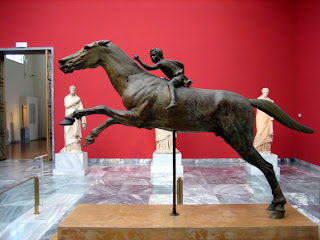BYZANTINE ART – MIDDLE AGE
The Byzantine Empire, also referred to as the Eastern Roman Empire, was the continuation of the Roman Empire in the East during Late Antiquity and the Middle Ages, when its capital city was Constantinople (modern-day Istanbul). It survived the fragmentation and fall of the Western Roman Empire in the 5th century AD and continued to exist for an additional thousand years until it fell to the Ottoman Turks in 1453. Byzantine Empire was a continuation of the Roman Empire but the majority of modern-day Italy was overtaken by barbarian tribes. Citizens of Byzantine Empire continued to refer to their empire as the Roman Empire or Romania and to themselves as "Romans”. There are three significant periods in Byzantine Empire which is Early Byzantine, Middle Byzantine and Late Byzantine.
Crossbow fibula
430 CE
Fibulae are brooches that were made popular by Roman military campaigns. They all consist of a body, a pin, and a catch. Ornate fibulae became all the rage in the early Middle Ages, and is one of the most commonly found objects in barbarian (non-Roman, nomadic, and illiterate groups traveling throughout Europe during the middle ages) grave sites. Grave goods like fibulae provide the most concrete cultural information about barbarians, due to the sparse amount of written documentation about them. The diverse ethnic groups were constantly borrowing from one another, while putting their own spin on things.
The diagram shows a very popular style of fibula, and is called a “crossbow” fibula because of its resemblance to the weapon. Unscrewing the left knob at the end of this “crossbow” would release the pin, which is visible in this photograph. The detailed incising on the body is called pierced openwork, and bears a Christian cross amongst a circular leaf motif. Although precious and intricate, it is a relatively simple design, indicative of the Byzantine/Roman fibulae style.




Comments
Post a Comment